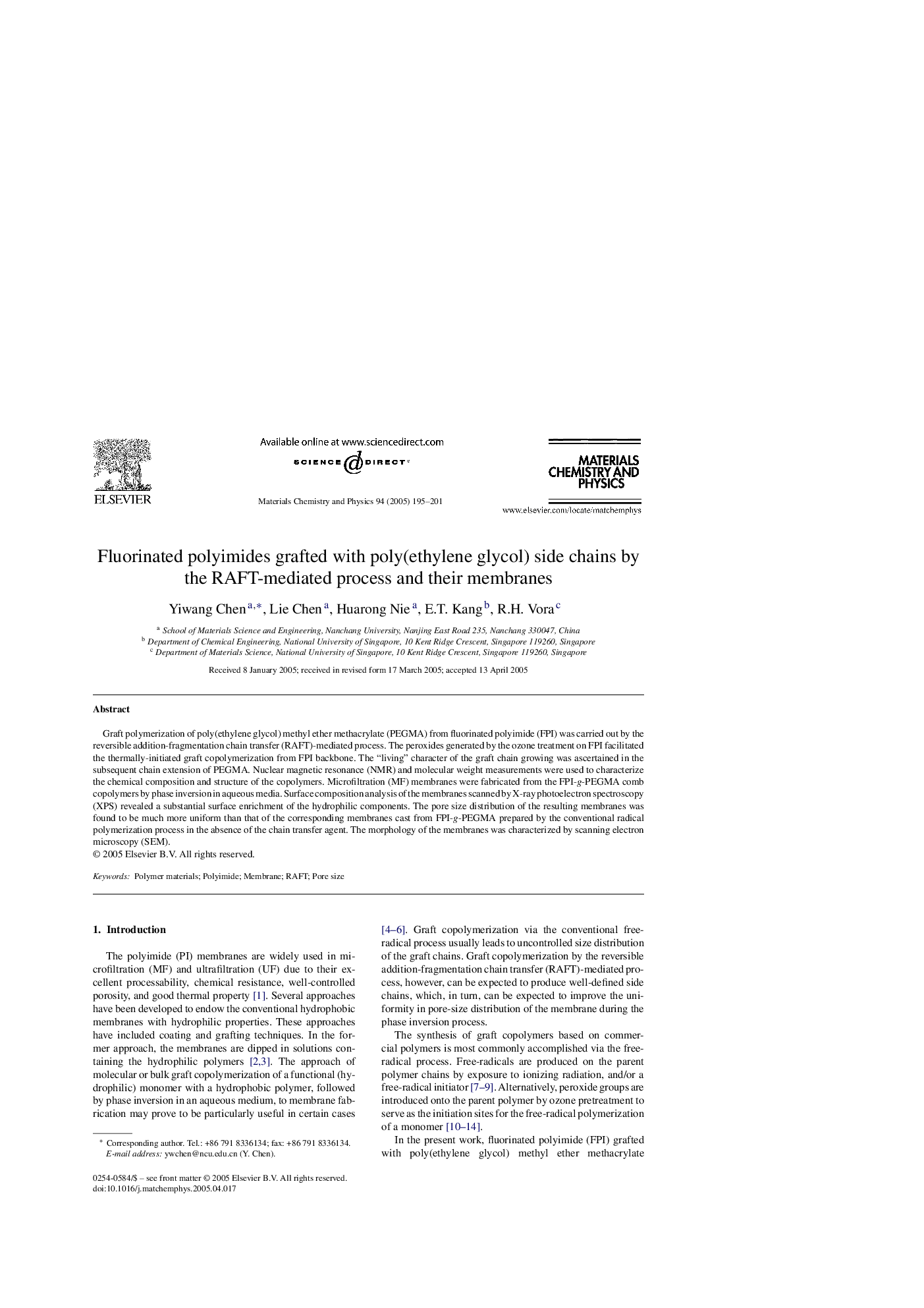| Article ID | Journal | Published Year | Pages | File Type |
|---|---|---|---|---|
| 9782928 | Materials Chemistry and Physics | 2005 | 7 Pages |
Abstract
Graft polymerization of poly(ethylene glycol) methyl ether methacrylate (PEGMA) from fluorinated polyimide (FPI) was carried out by the reversible addition-fragmentation chain transfer (RAFT)-mediated process. The peroxides generated by the ozone treatment on FPI facilitated the thermally-initiated graft copolymerization from FPI backbone. The “living” character of the graft chain growing was ascertained in the subsequent chain extension of PEGMA. Nuclear magnetic resonance (NMR) and molecular weight measurements were used to characterize the chemical composition and structure of the copolymers. Microfiltration (MF) membranes were fabricated from the FPI-g-PEGMA comb copolymers by phase inversion in aqueous media. Surface composition analysis of the membranes scanned by X-ray photoelectron spectroscopy (XPS) revealed a substantial surface enrichment of the hydrophilic components. The pore size distribution of the resulting membranes was found to be much more uniform than that of the corresponding membranes cast from FPI-g-PEGMA prepared by the conventional radical polymerization process in the absence of the chain transfer agent. The morphology of the membranes was characterized by scanning electron microscopy (SEM).
Related Topics
Physical Sciences and Engineering
Materials Science
Electronic, Optical and Magnetic Materials
Authors
Yiwang Chen, Lie Chen, Huarong Nie, E.T. Kang, R.H. Vora,
